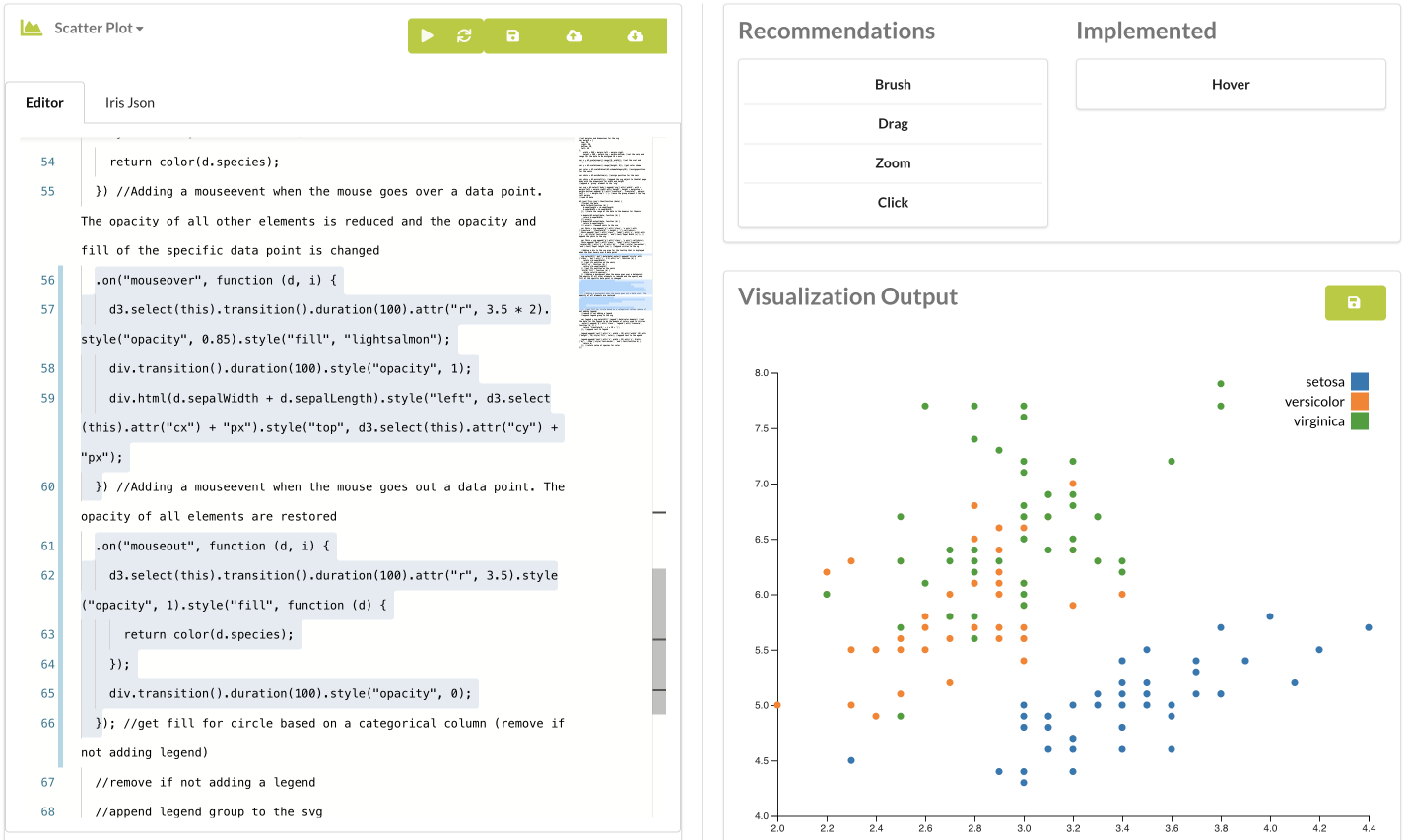Research
Project
Visualization Authoring In D3

Tool Demo
Programming based tools like D3 are some of the most popular and expressinve tools for creating datavisualizations. Yet programmatically creating visualization designs is often a cumbersome process, requiring technical extpertise that not all visualization designers have. While automated visualization generation tools exist they offer less control and limited design options. There is therefore a need to understand how we can help users leverage the expressive poser of programming tools like D3 while allowing them to have creative control over their designs. My research leverages evaluates the implementation practices of D3 designers from an exploration of 2500 D3 visualizations shared online. I also leverage techniques from software enginerring with machine learning applications to provided custom support for prototyping D3 visualizations. Checkout my VIS'22 short paper and IUI'23 paper for more details.
Publications
User-Driven Support for Visualization Prototyping in D3
Streamlining Visualization Authoring in D3 Through User-Driven Templates